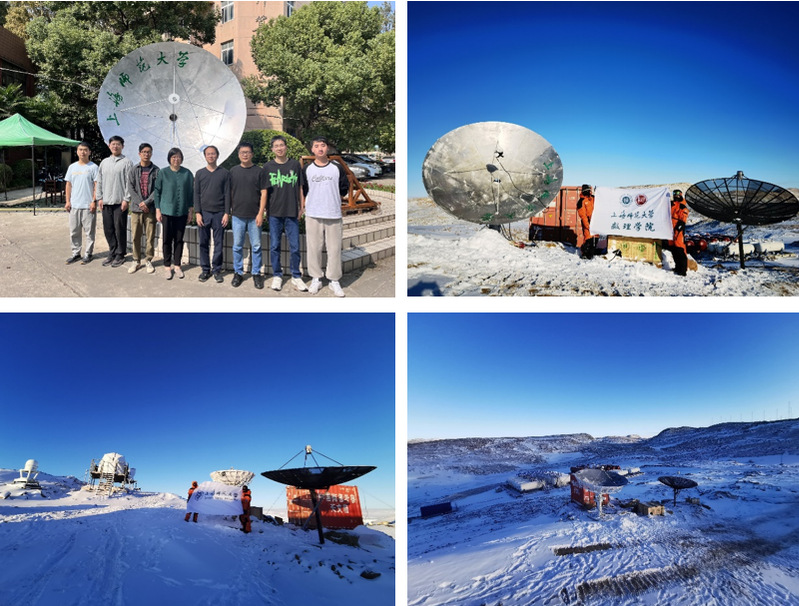On April 17th, a video conference on the progress report of the Antarctic radio astronomical observation mission was held at Shanghai Normal University (SHNU) with the Zhongshan Station in Antarctica, China. It was also attended by the SHNU President Yuan Wen, SHNU Vice President Li Ye, representatives from the SHNU School of Mathematics and Science, and Deputy Director of the Business Department of the China Polar Research Center, etc.
At the meeting, the relevant situations of astronomical observations at Zhongshan Station were introduced, followed by a detailed introduction to the installation and debugging progress of radio telescopes. In 2023, Shanghai Normal University collaborated with Nanjing Astronomical Instrument Co., Ltd. Affiliated to the Chinese Academy of Sciences to develop a 3.2-meter high-frequency radio telescope, equipped with a 24GHz receiver for observing the spectral lines of ammonia molecules in the galaxy. The antenna can receive signals up to 75GHz. The telescope arrived at Zhongshan Station on the Xuelong spacecraft at the end of December 2023, overcoming strong Antarctic winds and severe austerities. After more than three months of installation and debugging, it has been officially put into use. This is the first 3-meter low-frequency radio telescope independently developed by SHNU in 2022. The SHNU initiated radio astronomical observations at the Zhongshan Station area of Antarctica, and obtained important results including local electromagnetic environment information at the center and surrounding areas of the Milky Way in Antarctica. Since then, SHNU has taken another stride in Antarctic astronomy research. These two radio telescopes are also the only radio frequency band astronomical observation equipment from China in Antarctica.
The astronomical team of SHNU has received strong support from the China Polar Research Center for conducting research on Antarctic radio astronomy. In May 2023, Shanghai Normal University and China Polar Research Center signed an agreement to jointly build the Antarctic Astronomy Science and Education Integration Base, focusing on Antarctic astronomy, sharing scientific and educational resources, jointly carrying out cutting-edge scientific research, and promoting the cultivation of talents in Antarctic astronomy .




